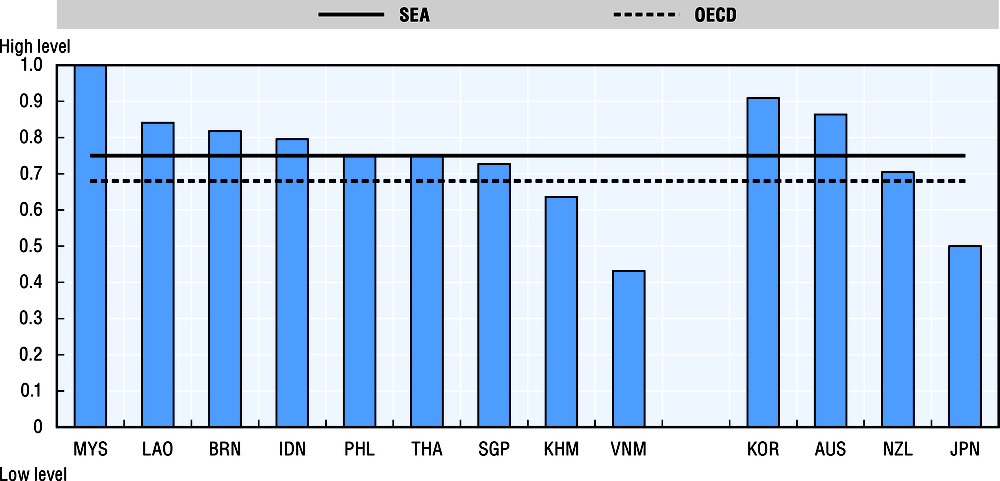The digital transformation touches all aspects of the public sector, and human resources management (HRM) is no exception. Data helps decision makers understand their current context, identify trends, plan for the future and manage risks. Data on the public service can provide insights on workforce composition and on the civil service’s ability to recruit, retain and manage civil servant performance. It is a fundamental input into effective strategic human resource (HR) planning and management. When collected and held centrally, it can be an important tool for benchmarking organisations and informing reform. This data can also be a powerful mechanism to ensure transparency and accountability for workforce diversity and effective HRM practices.
The nine SEA countries surveyed have standardised administrative data records at central or line ministry levels on the following data points: number of employees; level of seniority; function; age; gender; level of education; and length of service. Malaysia is the SEA country with the highest level of available and fully centralised administrative data records, although Lao PDR, Brunei Darussalam and Indonesia also have strong centralised datasets. Most administrative data are collected in Viet Nam, though at line ministry level. In Thailand, data collected is centralised by the Office of Civil Service Competence (OCSC) through the Government Manpower Information System (GMIS). At department level, HR data is managed through the Departmental Personnel Information System. The OCSC is planning to scale up this system by connecting the whole civil service. Almost all OECD countries, including the four OECD countries in the region, centralise data on the number of employees, gender and age.
Collecting data is only the first step towards data-informed HRM. The collected data needs to be analysed and communicated to managers and decision makers in a way that provides insight and supports accountability. As in most OECD countries, administrative data appears to be used most often in reports to the political level and to the senior civil service. However, while 28 OECD countries use administrative data in reports to the public, this is only done in five SEA countries – Brunei Darussalam, Lao PDR, the Philippines, Singapore and Thailand.
Finally, employee surveys are another type of data often used by public organisations to measure and monitor employee perceptions of their work and work environment. These can provide useful input to performance-related indicators such as employees’ engagement with their work and employers, or their perceptions of management and leadership. Employee surveys are widespread among OECD countries (only five countries do not use them). Among the SEA countries surveyed, three (Malaysia, Singapore, Thailand) report conducting centralised surveys across the whole central public administration (CPA), while in four countries (Brunei Darussalam, Indonesia, Malaysia, the Philippines and Singapore) government ministries/agencies conduct their own surveys. For instance, Brunei Darussalam conducted a survey among the civil service on the effectiveness of the performance management system in 2013. Findings raised a few areas of concern, such as the subjectivity of performance appraisals or inconsistency of criteria, leading to a new performance management system. In some countries universities or non-government organisations also carry out employee surveys in the public sector, but the impact of their results on government HRM practices is not known.

